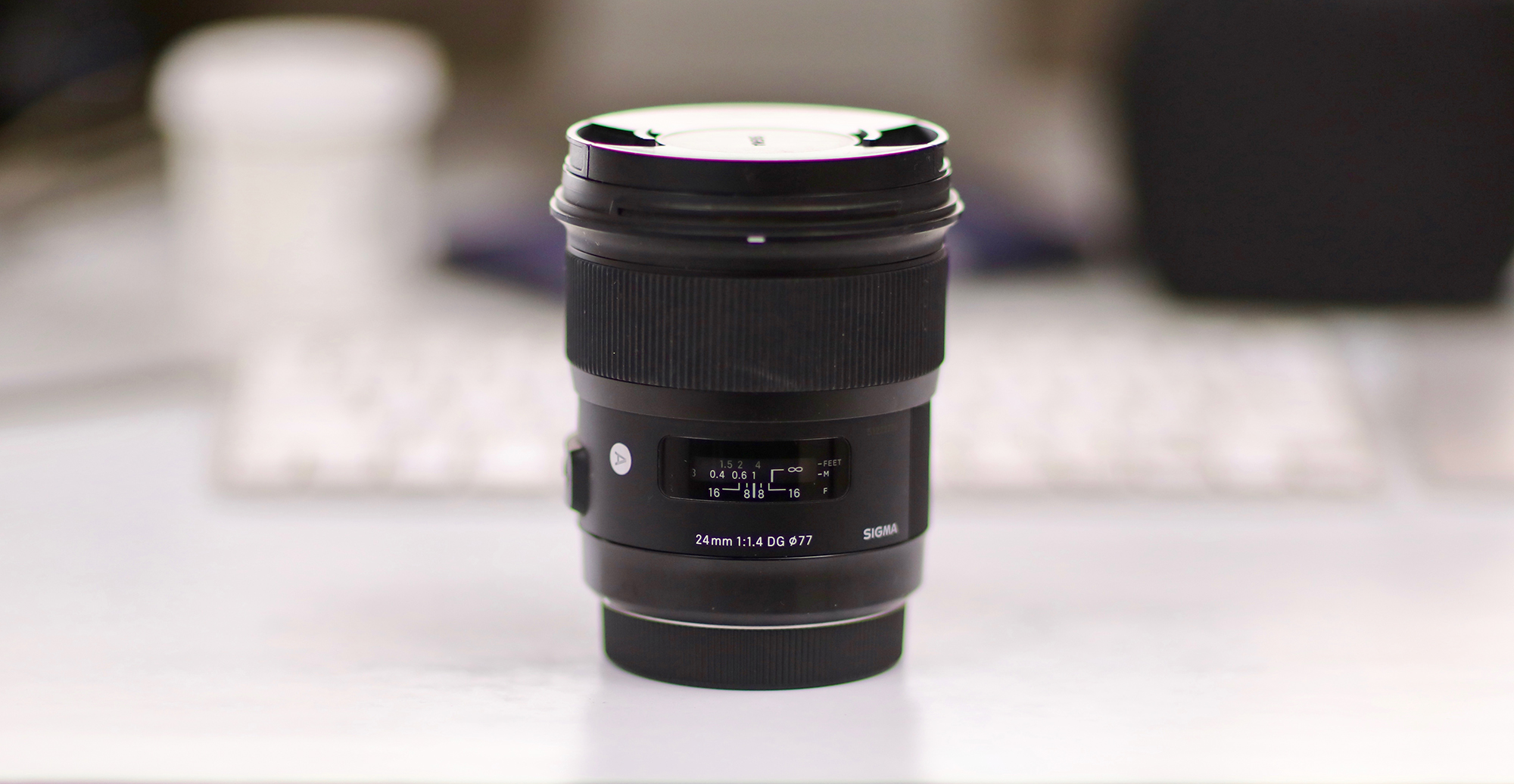What does a lens manufacturing company do when they want to get photographers’ attention? Put “f/1.4” in the model name of your lens. Pair that extreme wide aperture with a highly useful 24mm focal length, arguably best-available 24mm image quality and an attractive, highly functional design and you have a lens destined for success. What more can you do ? Make the price attractive! Hello Sigma 24mm f/1.4 DG HSM Art Lens.
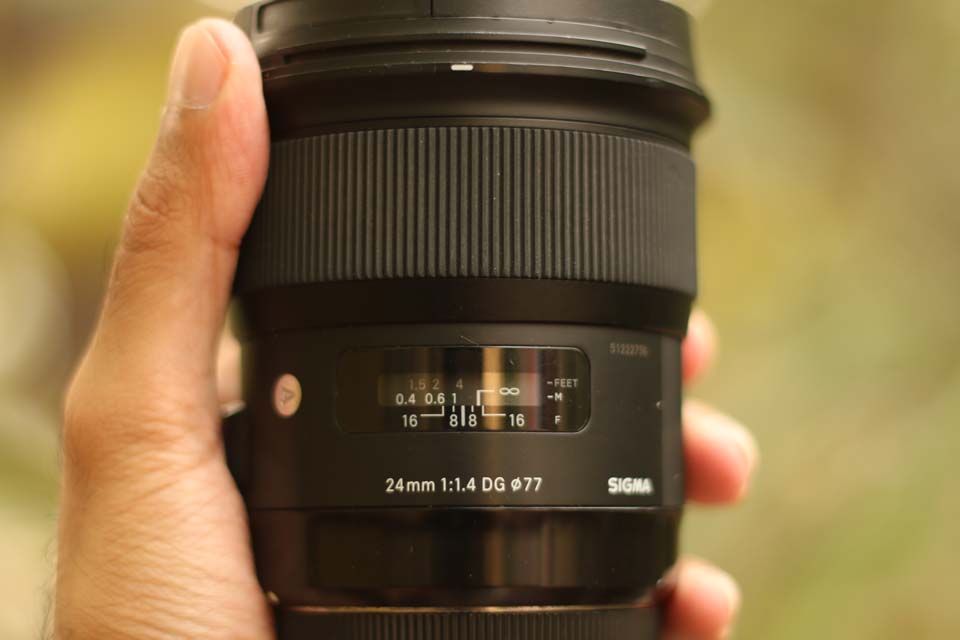
That the 24mm f/1.4 Art lens has arrived is not a surprise. Sigma has been making waves in the industry with their “Art” series lenses and, with the 35mm and 50mm f/1.4 Art primes being so well received, it is only natural that the 24mm f/1.4 Art Lens is now part of the lineup. These lenses share not only similarity in name, but also in design as seen in the following comparison image.
Performance across these lens models is also shared including the attention-grabbing best-in-class image quality each has successively delivered.
24mm Focal Length – Sigma 24mm f/1.4 DG HSM Art Lens Review
The 24mm focal length is wildly popular and very useful. Only 50mm is better represented in Nikon’s prime lens lineup and 24mm is tied for the focal length most represented by prime lenses in Canon’s lineup. What is 24mm being used for? The list is too long to generate, but I’ll list some of my favorite uses.
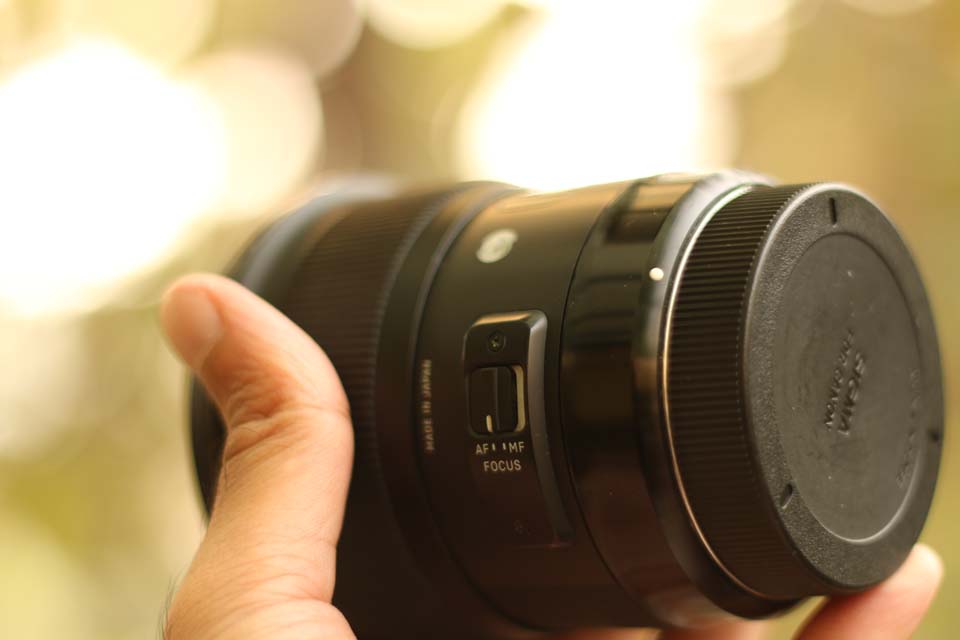
Landscape photography is a great use for a 24mm lens. This focal length is quite wide and allows an entire scene to remain in focus, but 24mm is not so wide that it complicates composition.
Architectural photography, large product photography, interior photography, birthday parties are some uses for 24mm.
Wedding and event photography often utilizes a wide angle lens for capturing the large scene, for environmental-type portraits and for larger group portraits in tight spaces.
When combined with an extreme wide aperture, a 24mm lens is a great choice for night sky photography.
While telephoto lenses are more frequently used for sports, a 24mm angle of view allows a very different perspective on these events. This focal length can be used to capture the big picture of the venue, overhead shots of the stars and their coaches being interviewed after the game.
When used on an ASP-C/1.6x FOVCF sensor format DSLR, this lens’ angle of view is similar to that of a 38.4mm lens on a full frame DSLR. While many of the uses for this AOV remain the same as for 24mm, the narrower angle of view obviously requires more distance for the same subject framing and the longer distance changes the perspective modestly.
Max Aperture – Sigma 24mm f/1.4 DG HSM Art Lens Review
With so many 24mm options available, aperture becomes one of the differentiators, and in this case, it is a big one. None of the big lens manufacturers offer a less-than 50mm focal length DSLR lens with an aperture wider than f/1.4. And none offer the f/1.4 aperture in a lens wider than 24mm.
Compared to the next-fastest f/2.8 24mm lens options (including many zoom lenses), the f/1.4 aperture allows 4x as much light to reach the sensor, permitting subject and camera-shake-stopping fast shutter speeds even in low light and providing subject-isolating shallow depth of field. Let’s take a closer look at the aperture range available in the Sigma 24mm f/1.4 DG HSM Art Lens.
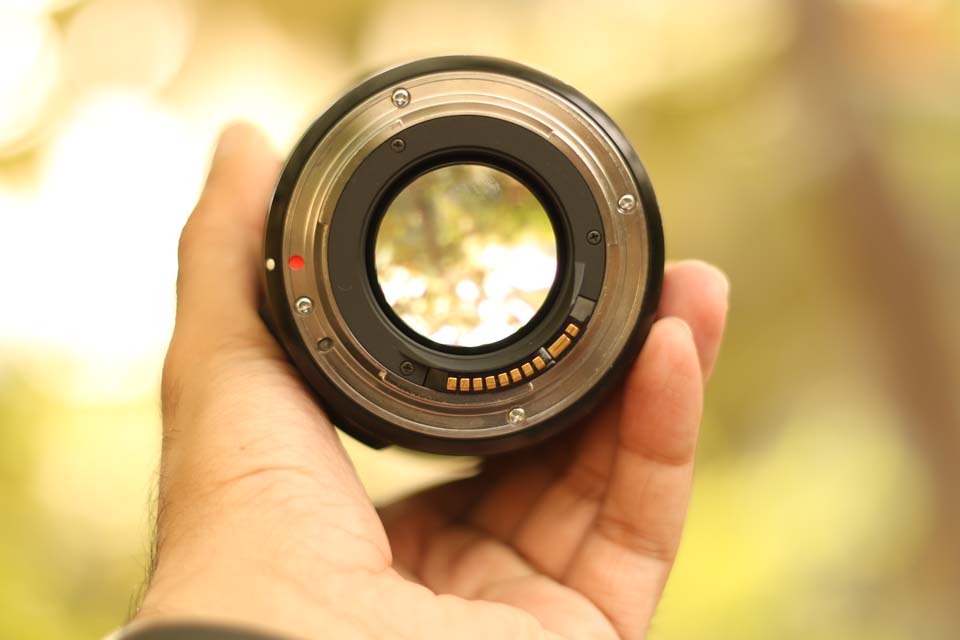
Some cameras have an extended ISO setting of 50 that can be optionally used in this situation (perhaps with lower dynamic range). Using a neutral density filter is another good option to retain the ability to use f/1.4 under direct sunlight and this is the best option when using cameras with shutters that max out at 1/4000 sec (such as the Canon Rebel series).
Stopping down (narrowing) the aperture is always an option for preventing an image from getting too bright. While stopping down negates the need for the wide f/1.4 aperture and the subject-isolating shallow depth of field is lost, this lens holds another potential advantage when stopped down: it will show less vignetting at f/2.8 than an f/2.8 max-aperture lens would show at this aperture.

Vignetting can be corrected in post processing with the penalty being additional noise showing in the amplified portions of the image circle. The initial capture brightness can also be increased as long as no channels (RGB) are blown in the center of the frame.
Image Quality – Sigma 24mm f/1.4 DG HSM Art Lens Review
In my opening comments, I mentioned that the Sigma 24mm f/1.4 Art Lens has “arguably best-available 24mm image quality.” Starting at f/1.4, this lens delivers a reasonably sharp center of the frame with obvious softening showing in the corners. A big improvement is seen in center of the frame sharpness at f/2 where details are rendered very sharply and little additional improvement is noticeable (or needed) at narrower apertures. Corners remain somewhat soft at f/2 and look much nicer at f/2.8.
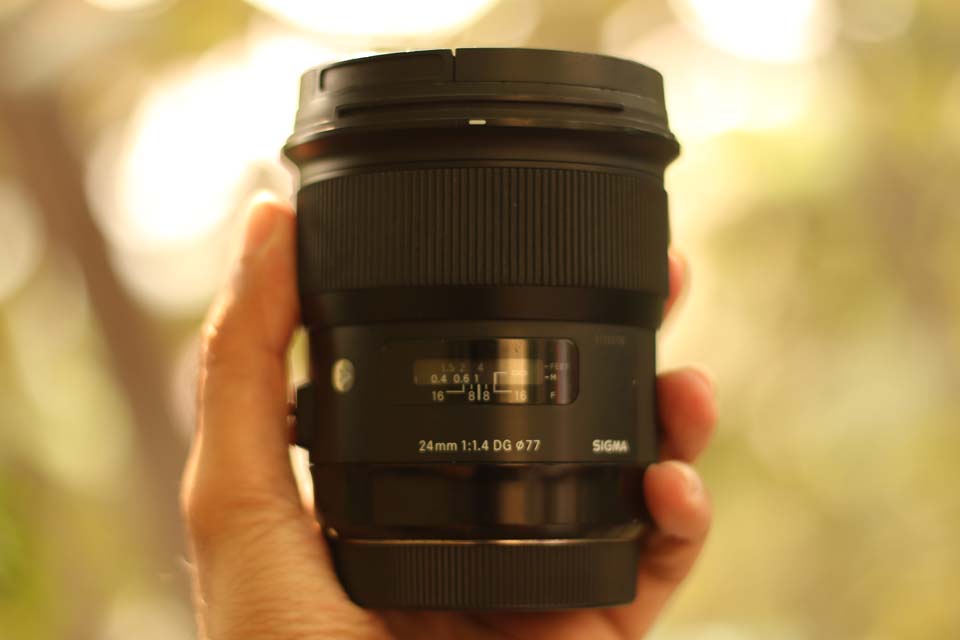
As I mentioned earlier, this lens shows noticeable vignetting at wide apertures. At f/1.4, corners are approximately 3 stops darker than the center of the frame. As illustrated in the photo of the runner, this amount is noticeable. While that may not sound good, proper perspective is needed: the Nikon and Samyang equivalents are similar in this regard and the Canon equivalent has about 1 stop of additional shading in the corners. Stopping down to f/2 reduces vignetting by about 50% and another 50% is lost at f/2.8 where vignetting becomes generally unnoticeable. Stopped down, the Sigma has noticeably less corner shading than the Samyang and Canon, and performs similarly to the Nikon.
APS-C users might notice the near-1-stop of shading in the corners in some images, but otherwise, vignetting is a non-issue for this format.

While I won’t declare this lens to be CA-free, it is nearly so. I can see a small amount of CA in high-contrast meridional lines (tangential to the radial lines) located near the frame corners. Purple fringing in areas of very high contrast near the center of the frame, sometimes an issue with ultra-wide aperture lenses, has not been a problem I’ve encountered with this lens. At f/1.4, this lens shows very little flare even with the sun in the corner of the frame. Flare linearly increases until becoming strong at f/16.
An advantage that prime lenses typically hold over the widest focal length of a zoom lens (24mm is a common one) is the lack of distortion. The 24 Art is nearly distortion free, showing just the slightest amount of barrel distortion. It takes a long, critically straight line near the long edge of the frame to detect any line bending happening.
Overall, this lens is turning in image quality that is equal or superior to anything else available in the 24mm focal length today.
Focusing – Sigma 24mm f/1.4 DG HSM Art Lens Review
The 24mm f/1.4 Art Lens AF is powered by Sigma’s HSM (Hypersonic Motor). Autofocusing happens with decent speed and in a quiet environment, only some very light shuffling is heard during AF. Focusing is internal and FTM (Full Time Manual) focusing is enabled.
Finding a subject approaching fast enough and close enough to challenge a 24mm AF system in AI Servo (subject tracking) mode is challenging.
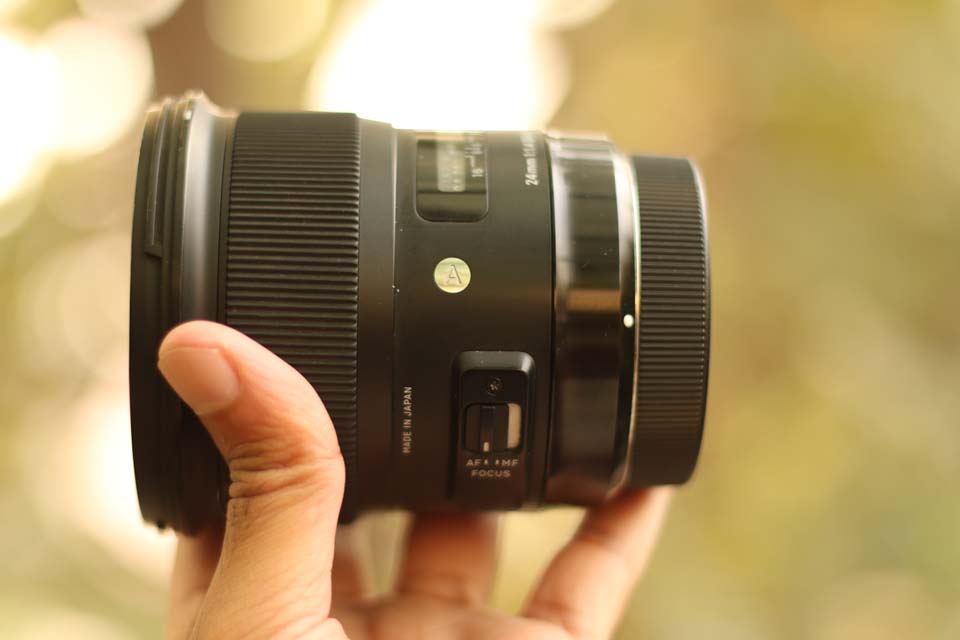
When focus distances are changed, 24 Art lens subjects change size by a noticeable amount. While this attribute is not unusual, photographers intending to use focus stacking techniques involving focus distance adjustment should be aware. Videographers pulling focus are sometimes also concerned about this attribute.
Sigma provides a small depth of field scale on this lens, though f/8 and f/16 are the only marks provided.
The 24 Art’s 1.22″ (30.9mm) manual focus ring is very nicely-sized, ideally positioned and, being raised just slightly from the barrel, especially easy to find. The focus ring is smooth, has no play and has ideal resistance. The 98° of rotation causes focus distance changes to happen more quickly than I prefer for critical manual focusing.
Focusing as close as 9.8″ (250mm), the Sigma 24mm f/1.4 Art Lens turns in a 0.19x MM. This is not a high figure, but it is better than the Canon and Nikon options and at least as good as the non-specified Samyang spec.
| Model | MFD | MM | |
| Canon EF 24mm f/1.4L II USM Lens | 9.8″ | (250mm) | 0.17x |
| Canon EF 24mm f/2.8 IS USM Lens | 7.9″ | (200mm) | 0.23x |
| Canon EF-S 24mm f/2.8 STM Lens | 6.3″ | (160mm) | 0.27x |
| Canon EF 35mm f/1.4L USM Lens | 11.8″ | (300mm) | 0.18x |
| Canon EF 35mm f/2 IS USM Lens | 9.4″ | (240mm) | 0.24x |
| Nikon 24mm f/1.4G AF-S Lens | 9.8″ | (250mm) | 0.179x |
| Nikon 28mm f/1.8G AF-S Lens | 9.8″ | (250mm) | 0.22x |
| Nikon 35mm f/1.4G AF-S Lens | 11.8″ | (300mm) | 0.20x |
| Nikon 35mm f/1.8G AF-S Lens | 9.8″ | (250mm) | 0.16x |
| Samyang 24mm f/1.4 US UMC Lens | 9.8″ | (250mm) | |
| Sigma 24mm f/1.4 DG HSM Art Lens | 9.8″ | (250mm) | 0.19x |
| Sigma 24mm f/1.8 EX DG Lens | 7.1″ | (180mm) | 0.37x |
| Sigma 35mm f/1.4 DG HSM Art Lens | 11.8″ | (300mm) | 0.19x |
| Zeiss 21mm f/2.8 Distagon T* ZE Lens | 8.7″ | (220mm) | 0.15x |
| Zeiss 25mm f/2.0 Distagon T* ZE Lens | 9.8″ | (250mm) | 0.17x |
| Zeiss 35mm f/1.4 Distagon T* ZE Lens | 11.8″ | (300mm) | 0.20x |
This lens is not compatible with Sigma teleconverters.
Build Quality & Features – Sigma 24mm f/1.4 DG HSM Art Lens Review
If you are familiar with the Sigma 35 Art and/or 50 Art lenses, you likely feel already familiar with this one.
The lens hoods sizes, each appropriate for the focal length’s angle of view, are perhaps the most-visible external difference among these lenses.
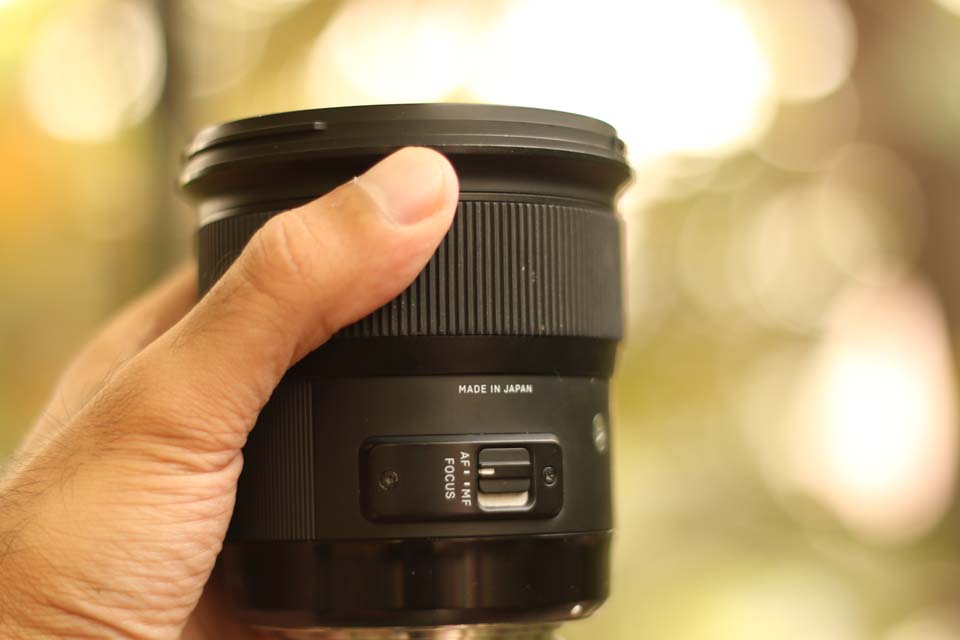
I view this design sharing as a very positive attribute of the 24 Art. Sigma’s Global Vision lenses all have an excellent, classy, high-end look and feel and the 24 Art is no different. From the aesthetic mix of matte and gloss black finish to the great-feeling sharply ribbed rubber rings to the smooth overall dimensions, these lenses all have very impressive design qualities.
The 24 Art is a fixed-size lens with plenty of ribbed surface provided for a sure grip. Most-significantly ribbed is the focus ring. The deep, sharp, tightly-spaced ribs on the Sigma Art lens focus rings remind me of the quality feel of Zeiss lens focus rings – though the Sigma ring is rubber-coated vs. the all metal Zeiss rings. Additional ribs are provided on half of the lens barrel and on the lens hood (making removal and installation easier).
Lens construction is once again of a Thermally Stable Composite (TSC) material with traditional metals used in places.
The Sigma 24’s single switch, enabling or disabling autofocus, is located within easy reach of the left thumb. A classy-looking, high-visibility white switch background shows when in AF mode with black showing when in MF mode.
Typically revealed by the bare silver lens mount ring showing when the lens is camera-mounted or has its rear cap installed is a lack of weather sealing. Weather sealed lenses typically (minimally) have a gasket that seals this area of the lens. Like the other two f/1.4 Art lenses, this lens is not weather-sealed. Make provisions to keep the lens dry/protected if inclement weather may be encountered during use.
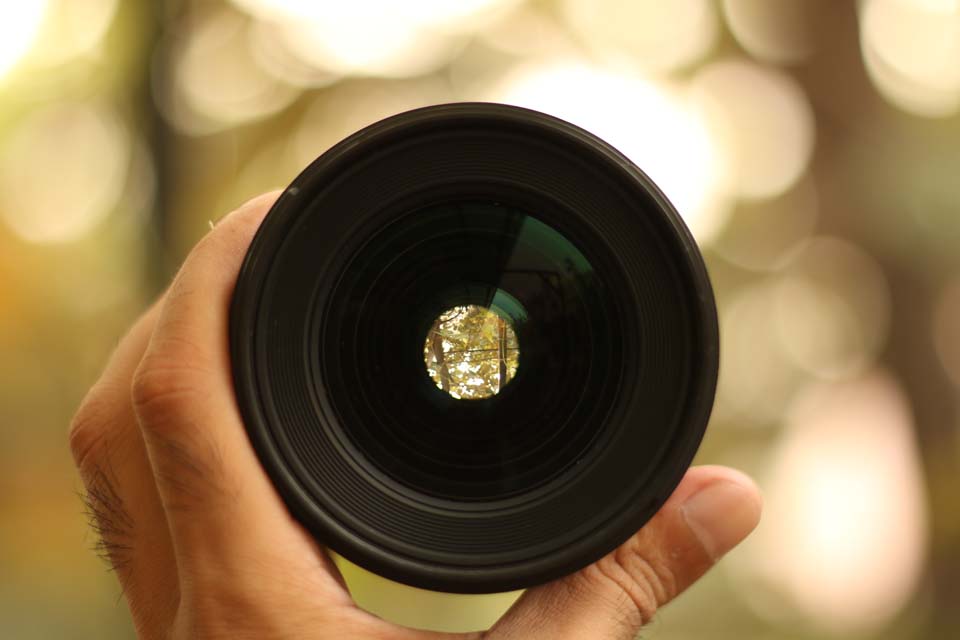
If I had to choose the perfect size for a lens in use, this is it. The 24 Art is not tiny, but it is big enough that I can grasp securely with my left hand. There are lighter lenses, but I like having some weight to help stabilize the camera. Enough size and weight are provided for use, but this lens is small enough to not consume a large amount of space in the pack and not heavy enough to be a burden to carry for long periods of time.

Wide apertures typically mean larger glass lens elements and larger elements typically mean more weight. An f/1.4 aperture is very wide and there is a weight penalty paid to gain that opening. Lenses with a significant amount of glass in them (typically wide aperture lenses), including this one, tend to feel solid due to their density.
The 24mm Art lens accepts the very common 77mm-sized filters. While not small or inexpensive , filters of this size can often be shared across a broad range of lenses, saving up-front cost and saving space in the case.
Sigma Global Vision – Sigma 24mm f/1.4 DG HSM Art Lens Review
Sigma’s Global Vision lenses get a classification of “A”, “C” or “S”, representing a primary Sigma-intended use of “Artistic”, “Contemporary” and “Sports”.

I’ve said it before; I am not a fan of the overly-simplistic categorization structure. As a Global Vision lens, the 24mm f/1.4 Lens gets an “A” stamped in a classy chrome circle on the lens barrel. As with some of the other “A” lenses, I’m sure that the wide “A”perture has some responsibility for the “Art” classification. Image quality also gets an “A”.
Image Samples – Sigma 24mm f/1.4 DG HSM Art Lens Review
All the sample images shared are completely untouched of any sort of editing, even basic processes like cropping and color correction are not performed to allow the reader to ascertain the image results.


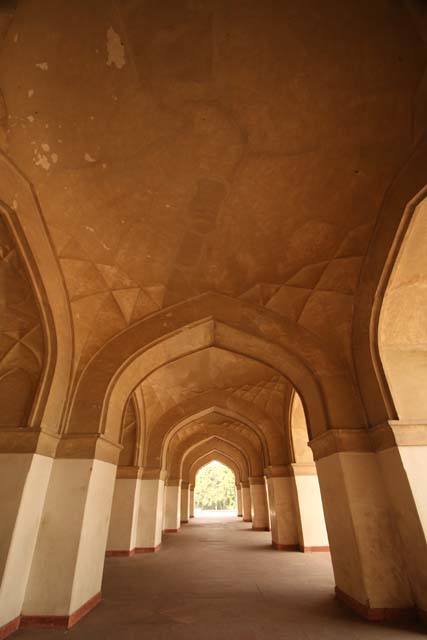

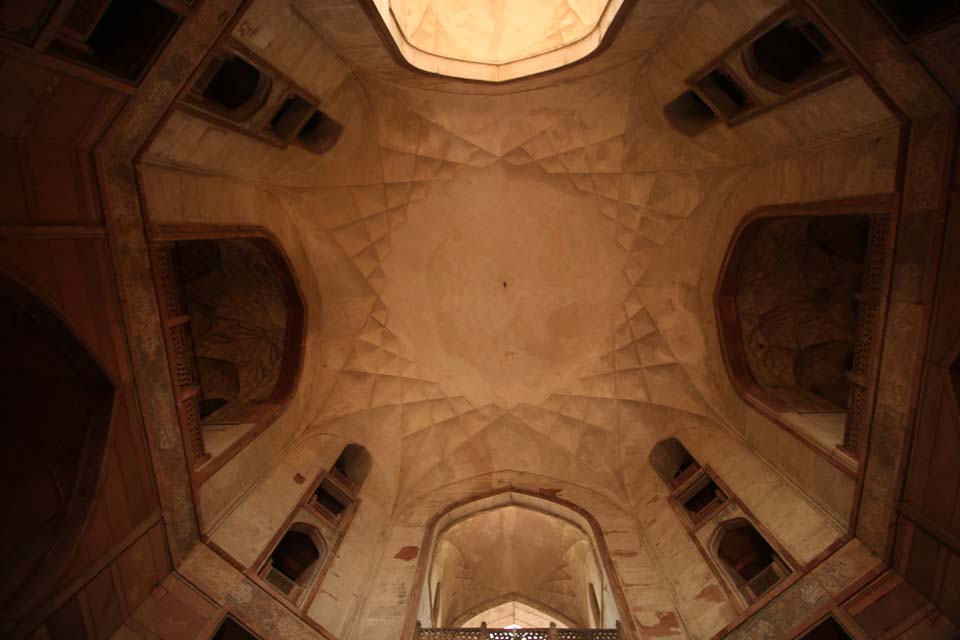







Price – Sigma 24mm f/1.4 DG HSM Art Lens Review
The Sigma 24 Art lens wears a medium-sized price tag, but when compared to its primary competition, this lens is a bargain.
The Sigma 24mm f/1.4 DG HSM Art Lens is available in Canon (reviewed), Nikon, Sony and Sigma mounts.
Summary – Sigma 24mm f/1.4 DG HSM Art Lens Review
As I see it, there is always room on the market for another good ultra-wide aperture prime lens. Though I don’t want to discount the AF inconsistency I occasionally encountered, Sigma continues to deliver greatness with their Art lenses and considering the performance the 24mm f/1.4 Art Lens is delivering at its price point, this lens is another winner. For considerably less cost than the Canon and Nikon equivalent, the 24 Art provides better image sharpness in a similar feature package. For those reasons and the versatility afforded by a wide focal length combined with a very wide aperture, Sigma’s 24mm f/1.4 Art lens will surely find significant popularity.
